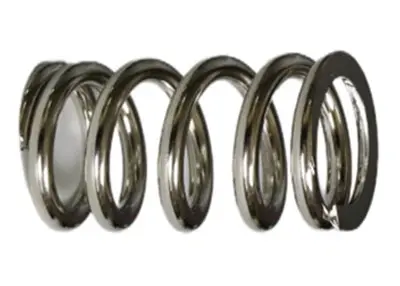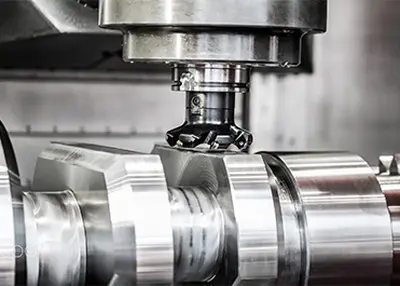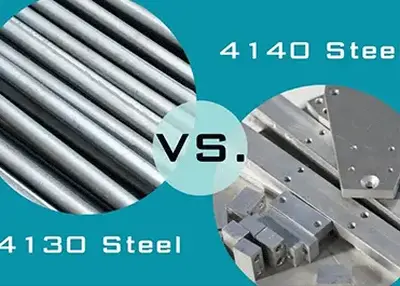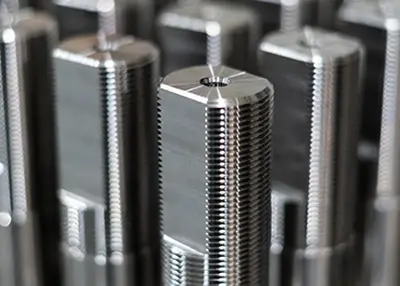In the previous article, we jointly delved into the application and development of the sheet in the equipment industry. We also clearly recognize that a device is constituted by a plethora of components, each playing a crucial role in its functionality and performance. In this installment, let's jointly embark on a journey to explore and understand the CNC machining parts within mechanical equipment, uncovering their significance and contribution to the overall efficiency and effectiveness of these complex systems.

CNC machined parts refer to various types of mechanical parts and components that are processed by computer numerical control (CNC) machine tools. CNC machine parts play an important role in the field of mechanical equipment manufacturing with their high precision, high efficiency and high flexibility. CNC machined parts can be precisely machined according to design drawings or three-dimensional models to achieve the manufacture of complex shapes and structures, and are widely used in many fields such as CNC machining aerospace parts, automotive manufacturing, and medical devices.
Take the aerospace field as an example. Relying on its characteristics of high precision and high efficiency, CNC machined parts are widely used in the manufacture of key components such as aircraft engines and aerospace vehicle structural parts. According to the data released by authoritative institutions, the market share of CNC machined parts in the aerospace field has been increasing year by year and has become an indispensable manufacturing method in this field. In the field of automotive manufacturing, CNC machined parts also play a decisive role. With the rise of new energy vehicles, the requirements for the precision and performance of automotive parts are getting higher and higher. With the characteristics of high precision and high efficiency, CNC machined parts meet this market demand.
According to industry analysis, in the next few years, the application of CNC router parts in the field of automotive manufacturing will be more extensive, and the market size is expected to continue to grow. In addition, CNC machined parts also show great market potential in the field of medical devices. With the continuous progress of medical technology, the requirements for the precision and performance of medical devices are also getting higher and higher. With its characteristics of high precision and high efficiency, CNC machined parts provide strong support for the manufacture of medical devices. It is predicted that with the rapid development of the medical industry, the application of CNC machined parts in the field of medical devices will be more extensive and the market prospect is broad.
According to different processing methods and uses, CNC machined parts can be divided into many categories. For example, according to the processing method, it can be divided into milling parts, turning parts, drilling parts, grinding parts, etc. The choice of these processing methods depends on the shape, size and precision requirements of the parts. For example, milling parts are suitable for manufacturing parts with complex curved surfaces and structures, while turning parts are more suitable for manufacturing shaft-like parts. In addition, machined part CNC can also be classified according to the type of material, such as metal machined parts and non-metal machined parts. In mechanical equipment, engineers will use a large number of CNC machined parts to complete the entire equipment.
It is reported that the demand for precision parts in modern equipment is getting higher and higher, and the rapid development of CNC technology also provides a strong guarantee for the demand for equipment. The introduction of CNC processing technology has also promoted the development of related industrial chains. With the increase in the demand for CNC machined parts, related industrial chains such as cutting tools, fixtures, and measuring instruments have also developed rapidly. This not only brings more opportunities for the mechanical equipment manufacturing industry, but also injects new vitality into the entire industrial chain.

The high precision and high efficiency of CNC machined parts are two core advantages in the current mechanical equipment manufacturing industry. With the continuous progress of science and technology, CNC processing technology has developed to a new height. Its high-precision characteristic mainly benefits from the stiffness of the CNC machine tool, the high-precision transmission system and the advanced control system. The CNC machine tool adopts high-precision components such as spindles, guide rails, servo motors, etc., as well as advanced interpolation algorithms and error compensation technologies, which can ensure processing accuracy and surface quality. Now by processing workpieces through CNC, the accuracy can be controlled to the micron level.
The high efficiency of CNC machined parts is manifested in several aspects. Firstly, in terms of multi-process integration, CNC processing can realize the integration of multiple processes, which can greatly reduce the transfer and clamping time between processes and thereby enhance processing efficiency. Secondly, for the high degree of automation, CNC machine tools can be outfitted with automatic loading and unloading devices, tool libraries, and automatic tool change devices, etc., so as to actualize the automation of the processing procedure, minimize manual interference, and boost production efficiency. Last but not least, regarding the fast processing speed, CNC machine tools adopt high-speed spindles and cutting techniques, enabling high-speed cutting and improving processing efficiency.
Relevant data shows that after adopting CNC processing technology, the production efficiency in the field of automobile manufacturing has increased by about 30%, and the processing accuracy has also reached the micron level. This transformation not only shortens the product manufacturing cycle, but also reduces the scrap rate, bringing significant economic benefits to enterprises. It is worth mentioning that the high precision and high efficiency of CNC machined parts are not isolated. There is a close connection between them. High-precision processing requires an efficient processing process to guarantee, and an efficient processing process requires high-precision processing technology to support. This interdependent relationship makes CNC machined parts have an irreplaceable position in the modern mechanical equipment manufacturing industry.
The design and modeling of CNC machined parts is a crucial link in the manufacturing of mechanical equipment. At this stage, designers need to comprehensively consider factors such as the functional requirements of the product, material selection, structural rationality, and processing technology.
Through advanced CAD software, designers can accurately draw the three-dimensional model of the machined part and carry out accurate dimension marking and tolerance control. In the design process, designers also need to use simulation techniques such as finite element analysis (FEA) to predict and optimize the stress distribution, thermal deformation and other properties of the machined part under different working conditions. These model analyses not only help to discover potential design flaws, but also provide strong support for the subsequent formulation of processing techniques.
In addition, the design and modeling of parts of a CNC machine also focus on the selection of materials. Different materials have different physical and chemical properties, which directly affect the key properties such as the strength, wear resistance and corrosion resistance of the machined part. Designers need to select the most suitable material according to the actual needs of the product and the working environment. It is worth mentioning that with the rapid development of digital and intelligent technologies, the design and modeling of CNC machined parts are gradually realizing automation and intelligence. By integrating artificial intelligence algorithms and big data analysis techniques, designers can optimize the design plan more efficiently and improve the performance and quality of the machined parts. This trend will not only promote the transformation and upgrading of the mechanical equipment manufacturing industry, but also bring a broader application prospect for CNC machined parts.
In the production process of CNC machined parts, material selection and pre-treatment are two crucial links. Material selection directly determines the performance and quality of the machined part, while pre-treatment lays a solid foundation for the subsequent processing process. In terms of material selection, common materials for CNC machined parts include metals, plastics and composite materials.
Metals are widely used due to their high strength, high hardness and good thermal conductivity. Plastics and composite materials have better plasticity and processing performance and are suitable for manufacturing parts with complex shapes and low precision requirements. For example, PA materials are widely used in manufacturing gears, bearings and other parts due to their good mechanical properties and wear resistance. The pre-treatment link cannot be ignored either. Before CNC processing, materials usually need to go through treatments such as cutting, grinding and cleaning to ensure that their surfaces are flat and free of impurities, thereby improving processing accuracy and product quality.
In addition, pre-treatment also includes heat treatment and chemical treatment of materials to improve their mechanical properties and processing performance. For example, annealing treatment of metal materials can eliminate their stress and improve processing stability; surface treatment of plastic materials can increase their adhesion to adhesives and improve product quality. In conclusion, material selection and pre-treatment play a decisive role in the production process of CNC machined parts. Reasonable material selection and meticulous pre-treatment can not only improve the performance and quality of the machined part, but also reduce production costs and improve production efficiency. Therefore, in the actual production process, we should fully consider the material performance and processing requirements and formulate a reasonable material selection and pre-treatment plan.
The processing and post-treatment of CNC machined parts are the key links to ensure product quality and performance. In the processing process, high-precision CNC machine tools and advanced tooling systems are the basis for ensuring processing accuracy and efficiency. Through precise CNC programming and tool path planning, CNC machining can achieve micron-level precision control to meet the processing needs of complex parts. In addition, the coolant used in the processing process and the optimization of cutting parameters are also important means to improve the processing quality.
The post-treatment link cannot be ignored either. After the completion of CNC machining, CNC machined parts often need to go through steps such as heat treatment and surface treatment to improve their mechanical properties and corrosion resistance. For example, through heat treatment processes such as quenching and tempering, the internal structure of the material can be changed to improve the hardness and wear resistance of the parts. Surface treatments such as sandblasting and polishing can improve the appearance quality and service life of the parts.
It is worth mentioning that with the continuous progress of technology, the processing and post-treatment of CNC machined parts are also constantly innovating. For example, the additive manufacturing (such as 3D printing) technology that has emerged in recent years provides a brand-new processing method for CNC machined parts. This technology can manufacture parts by layer-by-layer stacking of materials without the need for traditional cutting tools, greatly improving processing efficiency and flexibility.
In addition, the processing and post-treatment of CNC machined parts also face some challenges. For example, how to further improve processing accuracy, reduce surface roughness, and reduce thermal deformation during the processing process are all current research hotspots. In response to these problems, researchers continue to propose new solutions and technological innovations to promote the continuous development and progress of CNC processing technology. To sum up, the processing and post-treatment of CNC machined parts are the key links to ensure product quality and performance. Through advanced processing equipment, precise CNC programming and optimized post-treatment process, we can manufacture high-precision, high-quality and high-performance CNC machined parts to meet the needs of various mechanical equipment.

The problem of precision control of CNC machined parts is an important topic in the field of mechanical equipment manufacturing. With the continuous improvement of product quality requirements in modern industry, the precision control of CNC machined parts is particularly important. Precision control is not only related to the performance and service life of the product, but also directly related to the production efficiency and economic benefits of the enterprise.
The precision control of CNC machined parts involves multiple aspects, including the precision of the machine tool, the selection of the tool, and the setting of processing parameters. Among them, the precision of the machine tool is the foundation, which determines the highest precision that the machined part can reach. Then, even if there is a high-precision machine tool, without a suitable tool and processing parameters, it is also difficult to guarantee the precision of the machined part. Therefore, precision control requires comprehensive consideration of multiple factors and the adoption of comprehensive measures.
The surface quality of CNC machined parts is one of the important indicators to evaluate their performance and application effects. In mechanical equipment, the surface quality of CNC machined parts directly affects their wear resistance, corrosion resistance, sealing performance and service life. Therefore, improving the surface quality of CNC machined parts is of great significance for improving the overall performance of mechanical equipment and prolonging the service life.
In recent years, with the continuous progress of science and technology, CNC machining technology is also constantly developing. Among them, surface treatment technology, as an important part of CNC machining technology, has played a key role in improving the surface quality of CNC machined parts. For example, the use of advanced polishing technology can effectively remove the burrs and microscopic unevenness on the surface of CNC machined parts and improve the surface finish and smoothness. In addition, the use of advanced coating technology can form a protective film on the surface of CNC machined parts like CNC aluminum parts to improve their wear resistance and corrosion resistance.
However, improving the surface quality of CNC machined parts is not an easy task. In the actual production process, affected by various factors such as processing equipment, processing parameters and material properties, the surface quality of CNC machined parts is often difficult to reach the ideal state. Therefore, a series of measures need to be taken to optimize the CNC machining process and improve the surface quality of CNC machined parts. To sum up, improving the surface quality of CNC machined parts is one of the important directions in the development of CNC machining technology. By continuously optimizing the processing process and introducing advanced technologies and management means, the surface quality of CNC machined parts can be further improved to provide better support for the development and application of mechanical equipment.
Improving the processing efficiency of CNC machined parts is one of the continuous goals pursued in the field of mechanical equipment manufacturing. With the continuous progress of science and technology, CNC machining technology is also constantly innovating and optimizing, providing strong support for the improvement of processing efficiency.
At present, the processing efficiency of CNC machined parts has been significantly improved, but still faces some challenges and opportunities. First of all, the improvement of the processing efficiency of CNC machined parts benefits from the application of advanced numerical control technology and high-precision processing equipment. Modern CNC machine tools adopt advanced technologies such as high-speed cutting and multi-axis linkage, greatly improving processing speed and accuracy.
In order to improve the processing efficiency of CNC machined parts, many enterprises and research institutions are actively exploring new technologies and methods. For example, the use of advanced tool materials and coating technologies improves the durability and cutting performance of tools; at the same time, by optimizing cutting parameters and processing paths, the idle stroke and tool change time are reduced, and the processing efficiency is further improved. In addition, some research institutions are committed to researching new CNC machining technologies, such as high-speed cutting and dry cutting, in the hope of making greater breakthroughs in processing efficiency.
With the continuous progress of science and technology, the intelligentization and automation of CNC machined parts have become an important trend in the industry's development. The application of intelligent technology has made the production process of CNC machined parts more efficient and accurate, while also reducing the dependence on manual operations. For example, by introducing artificial intelligence algorithms, CNC machine tools can independently identify materials, adjust cutting parameters, and conduct real-time monitoring and optimization during the processing process, thereby greatly improving processing efficiency and product quality.
The introduction of automation technology has further enhanced the production efficiency of CNC machined parts. In the traditional CNC processing process, many links still require manual intervention, such as loading and unloading workpieces and changing tools. However, with the continuous development of automation technology, these cumbersome links can already be carried out through automated equipment such as robots, greatly improving production efficiency and reducing labor costs. In the future, with the continuous development of intelligent and automated technologies, the production of CNC machined parts will be more efficient, accurate, and flexible. We can predict that in the future, CNC machined parts will not only be a product but also a highly intelligent production tool, injecting new vitality into the development of mechanical equipment.
The application of CNC machined parts in mechanical equipment is becoming increasingly widespread, thanks to its characteristics of high precision, high efficiency, and flexible customization. Taking the field of automotive manufacturing as an example, CNC machined parts are widely used in the manufacturing of key components such as engines, chassis, and vehicle bodies. According to statistics, about 70% of the parts in modern automobiles use CNC processing technology. The application of this technology not only improves the production efficiency of automobiles but also significantly improves the precision and quality of components.
In addition, the continuous innovation and development of CNC processing technology also provide the possibility for its wider application in mechanical equipment. With the continuous development of intelligent and automated technologies, CNC processing equipment is gradually realizing intelligent operation and remote control, further improving production efficiency and processing accuracy. At the same time, the continuous emergence of new materials and advanced processes also provides more possibilities for the application of CNC machined parts.
If we happen to have CNC machined parts that need to be inquired about processing at present, then how should we choose a reliable supplier to ensure our delivery time and quality? When choosing a supplier for CNC machined parts, we first need to understand the equipment and production capacity of the other party, and also compare the delivery time, price, etc. Therefore, choosing a strong supplier can make us more worry-free and assured to process the products we need. For example, Richconn has accumulated a lot of experience in CNC machined parts.
When it comes to choosing the ideal partner for your custom CNC parts needs, Richconn is the one you should consider. Richconn is known for its rich database and extensive experience in handling various materials with ease.
We take pride in having a comprehensive range of precision machining equipment including CNC lathes, CNC machines, grinding machines, wire cutting machines and more to ensure the punctual delivery of CNC machined parts. Our dedicated quality inspection department is equipped with precise projectors, CMM and other testing equipment to guarantee the quality of CNC machined parts products. Richconn has a solid cooperative relationship with international logistics, enabling you to obtain your products in the shortest possible time. Submit your order today and let us fulfill your requirements for CNC parts online.
The application of CNC machined parts in equipment is very extensive, and they will be more precise. The old processing techniques will eventually be eliminated, and the new art will also gradually become active in the market. With the gradual stabilization of the market status of 3D printing, five-axis CNC, and precision wire-cutting EDM, CNC machined parts will undergo earth-shaking changes in the near future.
 GD&T Overview: What are the GD&T Symbols?August 23, 2023GDT symbols are the language used in engineering drawings to communicate design specifications and requirements for manufactured parts. GD&T symbol helps designers and manufacturers precisely defi...view
GD&T Overview: What are the GD&T Symbols?August 23, 2023GDT symbols are the language used in engineering drawings to communicate design specifications and requirements for manufactured parts. GD&T symbol helps designers and manufacturers precisely defi...view Types of Springs | Guidelines, Spring Types, and ApplicationsOctober 18, 2023Springs play a crucial role in various products, providing motion and shock absorption. This article will show you different types of springs and how to choose the right one.view
Types of Springs | Guidelines, Spring Types, and ApplicationsOctober 18, 2023Springs play a crucial role in various products, providing motion and shock absorption. This article will show you different types of springs and how to choose the right one.view CNC POR: Demystifying the Key Technology in CNC MachiningNovember 2, 2023In the world of precision engineering and manufacturing, CNC technology plays a pivotal role. Among the various CNC techniques, CNC POR stands out as a critical component, offering unmatched precision, efficiency, and versatility.view
CNC POR: Demystifying the Key Technology in CNC MachiningNovember 2, 2023In the world of precision engineering and manufacturing, CNC technology plays a pivotal role. Among the various CNC techniques, CNC POR stands out as a critical component, offering unmatched precision, efficiency, and versatility.view 4140 vs 4130 Steel: A Comparison of Two Common Alloy SteelsNovember 27, 2023Steel is one of the most widely used materials in various industries, such as construction, automotive, aerospace, and manufacturing. Steel has many types and grades, each with different chemical compositions and mechanical properties.view
4140 vs 4130 Steel: A Comparison of Two Common Alloy SteelsNovember 27, 2023Steel is one of the most widely used materials in various industries, such as construction, automotive, aerospace, and manufacturing. Steel has many types and grades, each with different chemical compositions and mechanical properties.view CNC Software: The Key to Efficient Machining ProcessesJuly 5, 2024CNC software plays a pivotal role in optimizing machining processes by enabling precise control over automated tools. Let’s discover the world of CNC machining: principles, software, benefits, and selection tips.view
CNC Software: The Key to Efficient Machining ProcessesJuly 5, 2024CNC software plays a pivotal role in optimizing machining processes by enabling precise control over automated tools. Let’s discover the world of CNC machining: principles, software, benefits, and selection tips.view What Are the Precautions for EDM Machining?October 27, 2023EDM is a relatively new metal working technique compared to rotary tooling, shearing and forging. A fast pulsed high-voltage discharge (spark) passes through the gap between the electrode and the grounded workpiece, removing material from the workpiece by erosion.view
What Are the Precautions for EDM Machining?October 27, 2023EDM is a relatively new metal working technique compared to rotary tooling, shearing and forging. A fast pulsed high-voltage discharge (spark) passes through the gap between the electrode and the grounded workpiece, removing material from the workpiece by erosion.view